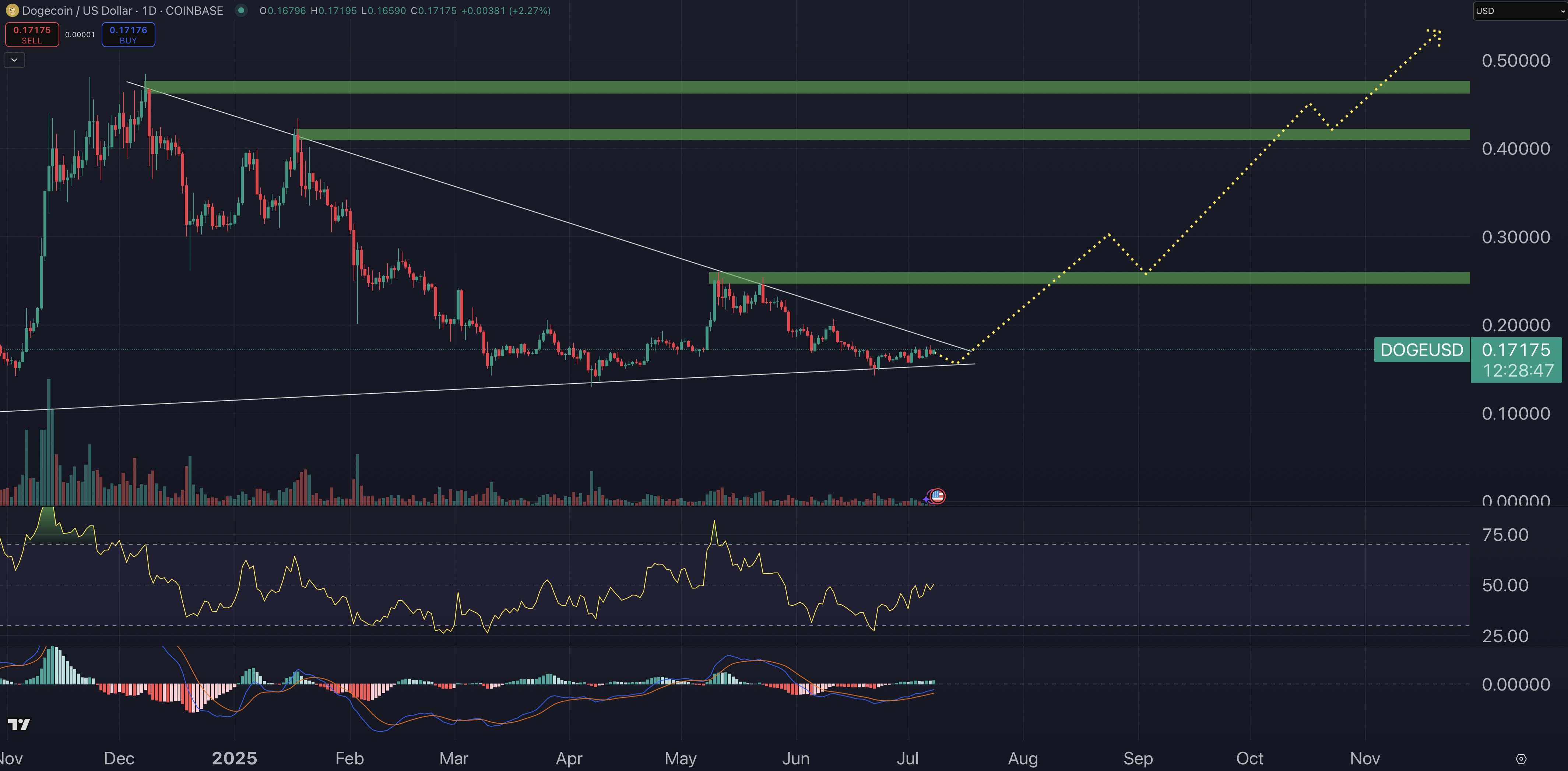Test scores weren’t improving and gaps weren’t narrowing much before the pandemic, so doing more of … [+]
getty
A prominent journalist is arguing that the solution to pandemic-related learning loss is to extend the school year. But the argument rests on shaky assumptions.
In a recent article—a collaboration between the New Yorker and ProPublica—Alec MacGillis describes what happened when Jason Kamras, the Richmond, Virginia, superintendent of schools, proposed a year-round school calendar. Schools would be in session for the same number of days—180—but there would be shorter breaks throughout the year rather than a long summer vacation.
That effort began in early 2021, after the city’s schools had been operating remotely for almost a year. Ultimately, schools would be physically closed in Richmond for a total of 18 months, and it was clear that the most vulnerable students—those from historically disadvantaged groups and lower-income families—were suffering the most. In Richmond, as across the country, test-score gaps between those groups and other students have widened dramatically since the beginning of the pandemic.
But, as MacGillis details, the year-round school proposal ran into stiff opposition. Eventually, the school board settled on a pilot program that would allow two schools to add an extra 20 days to the school year. Only about 1,000 of the district’s 22,000 students will get that additional time, beginning later this month.
MacGillis’s story uses Richmond as a case study, but his broader argument is that extending school time is our best hope for reversing pandemic-related learning loss. He has appeared on the PBS NewsHour and Morning Joe to discuss the piece, and he’s made some excellent points.
For example, he’s argued that the media should spend more time covering the learning-loss story and less time covering school culture wars. He’s pushed back against the argument from some on the left that gaps in standardized test scores are nothing to be concerned about because the tests are biased. And he’s certainly right that we need to do something radically different to make up for ground lost during the pandemic.
But in concluding that that “something” should just be more time in school, MacGillis and others—including some education experts—have been making assumptions that aren’t well supported by evidence.
Were Test-Scores Improving Before the Pandemic?
MacGillis’s fundamental assumption is that test scores show that students were making progress before the pandemic.
“We’ve actually been very successful in this country in closing some of the racial and economic disparities in our schools in the last couple of decades,” MacGillis said on the PBS NewsHour, “and they’ve just blown completely wide open over these last couple of years, largely because of the school closures and the shift to remote learning.”
On Morning Joe, he said, “We have been closing the achievement gap over the last few decades. We have been making progress, this is not a lost cause.”
In his article, MacGillis quotes Tom Kane, an economist at the Harvard Graduate School of Education, to the same effect: “It’s useful to remind people that things before the pandemic were improving. We had been making progress.”
But that’s not actually what test scores show—especially for reading. Math scores are generally more responsive to schooling, and they did improve significantly between 1996 and 2017, according to a 2018 report from the Brookings Institution. (All the scores discussed here are from the National Assessment of Educational Progress, or the NAEP, which are considered the most reliable.) But most of that increase came in the early 2000s, after the passage of the federal No Child Left Behind (NCLB) legislation in 2002. Math scores basically stayed the same between 2009 and 2018.
For reading, Brookings found that, as with math, there had been some modest improvement shortly after NCLB came into effect—for fourth grade. NAEP tests are also given at eighth grade, where a different pattern emerged, according to Brookings: there was no bump right after NCLB but, for some reason, a slight bump later on.
Even so, in 2019 NAEP administrators concluded that the average reading score at each grade wasn’t significantly different from what it had been a decade before. Looking back to 1998, they found that fourth-grade scores were somewhat higher, but scores at eighth grade were “not significantly different.”
And the year before, in 2018, a panel of experts convened by the NAEP governing board concluded that reading scores at both grade levels had been essentially flat since 1998. In the years just before the pandemic, those scores were already getting worse.
Were Test-Score Gaps Closing?
What about the idea that we were “closing the achievement gap,” as MacGillis argues? It’s true that racial and ethnic test-score gaps had been declining—slightly. As with overall scores, there was more improvement in math than reading.
According to the Brookings report, the Black-white gap in eighth-grade math had narrowed since 1996. But most of that narrowing had come in the early years of NCLB, and there was “little movement” between 2008 and 2018. In reading, the gap had “stayed more consistent” over the previous 20 years. There had also been some narrowing of the Hispanic-white gap. But, the report cautioned, both of those gaps remained quite large.
And if you look at the income-based gap in test scores—the gap between students from the wealthiest and poorest families—there hasn’t even been incremental progress. Between the mid-1990s and 2017, there was no change in income-based gaps for eighth-graders in either math or reading. So to the extent that Black and Hispanic students were scoring better, that was probably because more Black and Hispanic families had moved into the middle- and upper-income groups.
In addition, the trend in NAEP scores over the past several years—including the years before the pandemic—shows an increasing gap between students who scored high on the tests and those who scored low. That’s true across racial groups.
The Brookings report concludes that a review of NAEP data from 1998 to 2018 “leaves plenty of reason for concern. Test score gaps by race, ethnicity, and family income remain distressingly wide, and although racial and ethnic gaps show signs of slow improvement, little in the recent trends suggests the gaps will close in the near future.”
That’s hardly the pre-pandemic success story portrayed by MacGillis and Kane.
Does Changing the School Calendar Boost Achievement?
Second, MacGillis and others rely on evidence about summer learning loss to argue that students from historically disadvantaged groups lose ground when schools are closed. But recent data suggests that the gaps between students from wealthier and poorer families grow at basically the same rate year-round—they don’t grow more over the summer. So if you want to narrow those gaps, just adding more school time doesn’t seem to be the way to do it.
It’s true that most students lose some ground during the summer, especially in math. But one researcher who reviewed studies through 2009 found that “extending the school year had at best a small positive impact on academic achievement over time.” Nor did achievement improve at schools that adopted a year-round calendar of the type Jason Kamras initially proposed.
In his article, MacGillis says that in arguing for year-round school, Kamras “cited a report issued by staff of the Virginia legislature which indicated that, according to recent research, a year-round calendar produced varied results over all but had clear benefits for Black students.” There’s no cite or link provided for the report or the research. MacGillis also quotes a Duke University psychology professor named Harris Cooper who “has researched the issue” and says that summer reading losses are greater for students from low-income families. Again, no studies are cited.
But last year, an article in Education Next argued that the research on year-round school calendars is not very good—citing, among other things, a meta-analysis by Harris Cooper himself, which said that the quality of the evidence “leaves much to be desired.” The authors of the article identified a handful of rigorous, large-scale studies of the issue, and they concluded that those studies “found no benefit for student learning—and some evidence of harm.” They also found no evidence that year-round calendars benefited Black or Hispanic students or those who came from low-income families.
The third assumption in MacGillis’s argument follows from the first two: If we were making progress in narrowing gaps before the pandemic, and if disadvantaged students lose more learning when schools are closed, then we need to keep schools open longer. But if the first two assumptions are dubious, the third one necessarily is as well.
We Need a More Radical Solution
I share MacGillis’s sense of urgency, and I appreciate his efforts to bring attention to a potentially devastating problem that affects millions of students. But he presents an increase in school time as the radical response this problem demands. This is “exactly the time when we need to completely change the way things have always been done,” he said on PBS, “because what was done before is simply not going to be enough to make up all of that lost ground.”
The problem with his solution, though, is that it’s not radical enough. If what we were doing before wasn’t working, just doing more of it isn’t likely to work either.
If we really want to narrow gaps and make up for pandemic-related learning loss, we need to change what and how we teach—especially in the area of reading. Part of what needs to change is our approach to teaching kids how to decipher individual words, which doesn’t work for many of them, especially those at the lower end of the socioeconomic spectrum.
We also need to change our approach to reading comprehension, which takes up the lion’s share of instructional time in elementary school—and presumably would continue to do so with an extended school year. Under the mistaken belief that comprehension should be taught as a set of abstract skills—like “finding the main idea” of a passage—schools have failed to give children access to the knowledge and vocabulary that would actually enable them to understand the complex text they’re expected to read at higher grade levels.
The basic reason for test-score gaps—particularly those that are income-based—is that some kids are better able to acquire that kind of knowledge and vocabulary at home. Those kids tend to come from more highly educated families, and in our society, those families tend to have more money.
Schools can probably never entirely close those gaps, but they can do a lot more than they’re doing right now to narrow them. More and more schools are adopting a different kind of elementary literacy curriculum—one that focuses on building knowledge rather than having kids practice comprehension skills in isolation.
As teachers and school district leaders told me when I interviewed them for a podcast I’m hosting, dramatic changes are taking place in many of those schools. But for complex reasons, it often takes years to see the result of that increase in students’ knowledge and vocabulary on standardized reading tests.
Is Richmond one of the districts adopting this new approach to reading instruction? Or, like most districts, is it still using the same ineffective methods the vast majority of schools have had in place for decades? There’s nothing in MacGillis’s piece that sheds light on that question. It’s assumed that whatever instruction schools are providing, it’s working—or it would work if students just got more of it.
MacGillis is right that pandemic-related school closures have created an emergency. And more school time could help. But if schools use that time just to provide more of the same approach that was holding so many students back before the pandemic, we’ll only be spinning our wheels.
Credit: Source link











